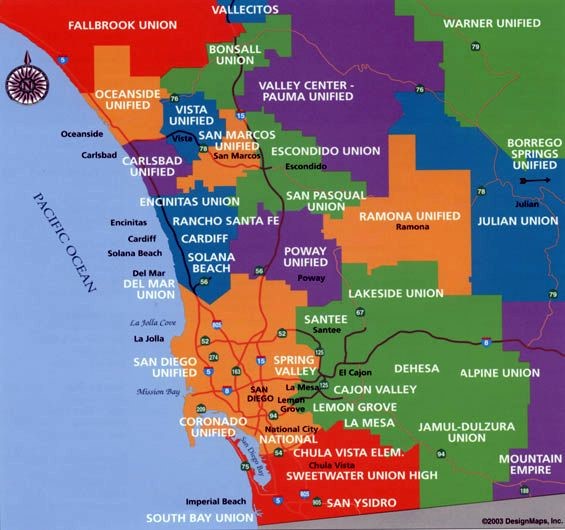

 Skip to navigation
Skip to navigation
Site Primary Navigation:
- About SDSC
- Services
- Support
- Research & Development
- Education & Training
- News & Events
Search The Site:

Published July 12, 2023

SDSC led efforts for a COVID-19 e-Decision Tree that has been utilized by school administrators, students and parents throughout the state of California. Since October 2021, the application has received over 100,000 hits. Credit: San Diego County Office of Education
By Joey Kaminsky and Kimberly Mann Bruch, SDSC Communications
At the start of the pandemic, researchers at the San Diego Supercomputer Center (SDSC) at UC San Diego began a collaboration with epidemiologists at the County of San Diego Health and Human Services Agency to discuss the dynamics of COVID-19—populations at higher risk, the county’s pandemic response and ways to mitigate infection. The collaboration included a project led by SDSC researcher Ilya Zaslavsky and a team of UC San Diego undergraduate data science students, who developed a COVID-19 e-Decision Tree for San Diego K-12 schools in conjunction with the San Diego County Office of Education.
The e-Decision Tree has since become a “go-to” online tool for school officials who have needed to quickly generate authoritative guidelines for parents and for students and staff infected or exposed to the virus.
Participants who use the tool complete the online form by inputting symptoms, recent test results and/or COVID-19 exposure circumstances, and possible close contact with COVID-positive individuals in public settings or at home.
“By answering a series of five or six brief questions generated by this electronic tool, SDSC has allowed school nurses and primary care pediatricians to replace a time-consuming and complex set of public health regulations with a 30-second survey,” said Howard Taras, MD, UC San Diego Pediatrics.
Since October 2021, Zaslavsky’s team has updated the application dozens of times—refining the language, tuning decision logic, making the recommendations more concise and straightforward and improving ease of use. Most recently, Joey Kaminsky, an intern participating in the National Science Foundation Research Experience for Undergraduates program at SDSC, revamped the previous e-Decision Tree application and updated the decision logic to be more versatile for future changes in guidelines, while not impacting the user-friendly nature of the survey.
“This update included changing the order of questions to better suit the current COVID-19 guidelines, rewording questions to be more succinct and simplifying the behind-the-scenes logic so that the survey is more adaptable for future COVID guidance changes,” explained Kaminsky.
Recent feedback from participants who completed the e-Decision Tree applauds the survey for its intuitive interface, alignment with the latest COVID-19 guidelines and valuable recommendations. One comment specifically mentioned that the survey provided "clear and concise answers" and expressed excitement about its updated version based on the most recent CDC and CDPH guidance.
“This feedback will serve as a valuable guide for future updates and improvements to the e-Decision Tree, ensuring that it continues to meet the needs and expectations of school administrators, students and parents in San Diego County. Adapting and improving tools such as the e-Decision Tree based on the lessons learned from the COVID-19 pandemic is crucial for better preparedness and response to future health emergencies,” Zaslavsky said.
Kaminsky said that updating and enhancing the e-Decision Tree application has been a rewarding experience.
“Knowing that my work directly impacts the effectiveness of this tool used by local schools in San Diego is truly gratifying,” he said. “The data science knowledge and skills I have gained during this process will undoubtedly shape my future endeavors, and I am excited to contribute to further advancements in the field.”
Share